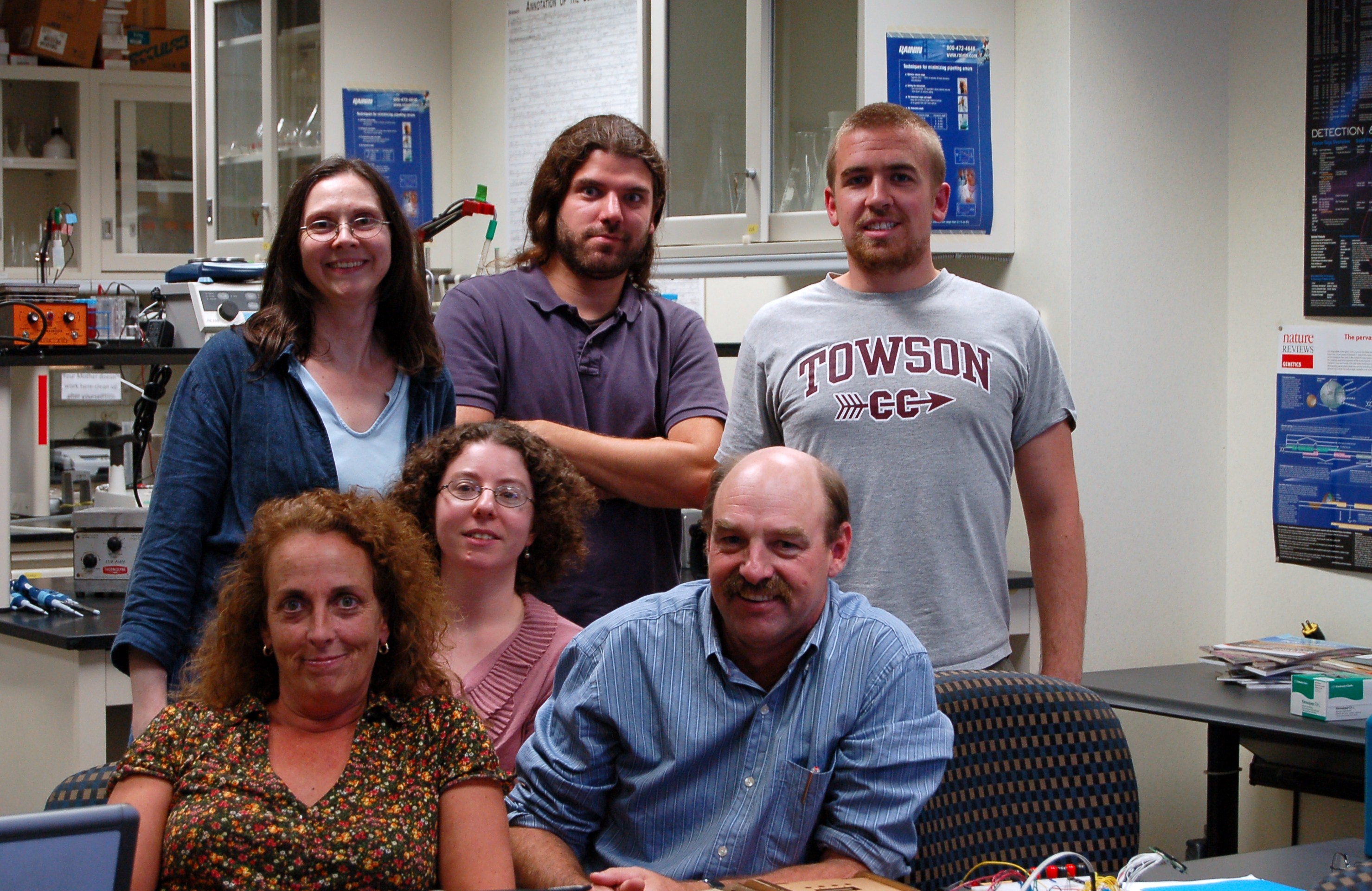Team:Baltimore US/Notebook
From 2010.igem.org
BioMechanic (Talk | contribs) (→Notebook) |
(→Notebook) |
||
| Line 26: | Line 26: | ||
==Notebook== | ==Notebook== | ||
| + | |||
| + | June 10, 2010 | ||
| + | |||
| + | Tonight we tested the hypothisis that the plasmid did not code for the antibiotic resistance/that we did not use enough dna. A Restriction Digest reaction was set up on the ligation reactions compleated on June 7. The reactions were cut with EcoR1 and Pst1. The reactions were allowed to incubate at 37 degrees C for one and a half hours. The digests were then ran on a electrophorasis gel. No DNA was present as there was not enough DNA, thus proving Duke's hypothisis. | ||
June 8, 2010 | June 8, 2010 | ||
Revision as of 05:17, 11 June 2010
| You can write a background of your team here. Give us a background of your team, the members, etc. Or tell us more about something of your choosing. | |
|
Tell us more about your project. Give us background. Use this is the abstract of your project. Be descriptive but concise (1-2 paragraphs) | |
| Team Example |
| Home | Team | Official Team Profile | Project | Parts Submitted to the Registry | Modeling | Notebook | Safety |
|---|
Notebook
June 10, 2010
Tonight we tested the hypothisis that the plasmid did not code for the antibiotic resistance/that we did not use enough dna. A Restriction Digest reaction was set up on the ligation reactions compleated on June 7. The reactions were cut with EcoR1 and Pst1. The reactions were allowed to incubate at 37 degrees C for one and a half hours. The digests were then ran on a electrophorasis gel. No DNA was present as there was not enough DNA, thus proving Duke's hypothisis.
June 8, 2010
In attendence: Colin, Patrick, Liz, Ryan, Duke and Tom. Missing: Andy, Scott.
So tonight we came in and took the 4 ligations/new part combinations from yesterday and transformed them into the competent cells, using a heat-shock transformation, while also preparing the Control groups (one with nothing/one with the ampicillan resistance). 3 of the parts were Tetracycline resistant, and 1 was Chlorephenecol. After the 90 minute transformation cycle we plated 6 versions of each of the 3 parts along with 1 plate of control and one negative group.
The 6 plates were done in a 0, -1, -2 dilutions in 2 concentrations one of 50 ul, and one of 200 ul.
They will be left for tomorrows team to run gel electrophoresis to determine whether they have the appropriate combination links.
June 7, 2010
In attendance: Colin, Patrick, Robert, Ryan, David, Gary, Miles, Duke and Tom. Missing: Melissa.
Tom greeted us with 4 separate sheets that contained 3 reactions each for us to begin restrictions and began heating to let the enzymes cut. A lesson in what not to do, was offered as we began the heating cycle of restriction in the PCR blocks and he timing had been set to 35 seconds instead of 35 minutes, after which it heated to a kill cycle of 80 degrees and we had to reapply the enzymes, in case the enzymes had been denatured.
We had 6 individuals building the 4 sheets, 2 in redundancy.
The legend for the various parts is as follows...
| 1PO | BBa_R0063 |
| 2PO | BBa_P0412 |
| 3PO | pSBIT3 |
| R (black marker) | BBa_R0062 |
| I (black marker) | BBa_I13507 |
| S (black marker) | pSBIT3 |
| F (green marker) | BBa_F2620 |
| I (green marker) | BBa_I13507 |
| S (green marker) | pSBIC3 |
| R10 (green marker) | BBa_R0010 |
| 462 (green marker) | BBa_I0462 |
| IT3 (green marker) | pSBIT3 |
| A/R10 (green marker) | BBa_R0010 |
| B/462 (green marker) | BBa_I0462 |
| C/IT3 (green marker) | pSBIT3 |
Patrick cut parts BBa_r0063 and BBa_p0412, and the plasmid backbone pSBIT3. The next step is to ligate them. Robert cut parts BBa_R0062 and BBa_I13507, and the plasmid backbone pSBIT3. Collin/Miles cut parts BBa_F2620, BBa_I13507 and the plasmid backbone pSBIC3 (labeled w/green marker).
After which we had a round table discussion about what kind of projects we may follow up with and the process of using the ncbi databases to discover pre-existing sequence information related to our various ideas. One idea we have discussed was the option of creating a smoother introductory curve for fellow DIY commmunity members and the creation of home-brewed enzymes that might be to pricey for the amateur scientists. We ended the night with the beginning of the various ligation reactions, as seen above.
- Ligation Reaction for R10+462+IT3 in 'LIGATE 05X
- Ligation Reaction for A/R10+B/462+C/IT3 in 'L/LIG
- Ligation Reaction for F2620+I13507+IC3 with "Green Asetrisk"
 "
"
